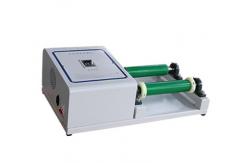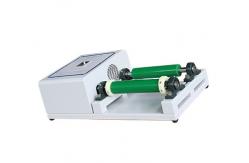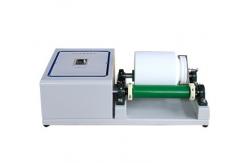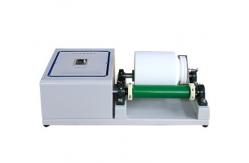650rpm Laboratory Jar Mill Roller Grinding Machine 80ml 125ml
|
|
Innovations in Fine Grinding and Mixing Precision Roller Ball Mill
High-Capacity Roller Mill For Ideal for Metal Powders Low Maintenance
1. IntroductionA Roller Ball Mill is a grinding machine used to crush, blend, and homogenize materials into fine powders by utilizing rotating rollers and grinding media (balls). It is widely used in industries such as mining, ceramics, cement, pharmaceuticals, paints, and chemical processing. This machine operates on the principles of impact, attrition, and shear forces, making it suitable for both wet and dry grinding processes. 2. Working PrincipleThe roller ball mill functions through the following mechanisms: (a) Impact Grinding
(b) Attrition (Friction Grinding)
(c) Shearing & Compression
3. Key Components & Their Functions
Features: 1. Compact structure, easy operation 2. High efficiency and uniform granularity 3. Milling pot in different size can be put on the driven rubber roller within a certain range by means of adjusting space between the rubber rollers. 4. It is convenient to change pots and suitable for both wet and dry grinding.
Technical Parameters:
Mill pot Materials of jars for choosing: Agate, Zirconia, Alumina ceramic (Corundum), Tungsten Carbide, Stainless steel,PU (Polyurethane), PU with stainless steel liner, PTFE (Polytetrafluoroethylene), Nylon etc. Vacuum jars are available as well.
Mill balls Materials of balls for choosing: Agate, Zirconia, Alumina, Tungsten Carbide, Stainless steel,PU, PTFE, Nylon, Carbon steel, PU etc. Sizes for choosing: 1mm, 3mm, 5mm, 8mm, 10mm, 12mm, 15mm, 20mm, 25mm, 30mm
Package photo:
Notice: *Secure Components: Ensure rollers, chambers, and other components are properly assembled and secured before operation. *Emergency Stop: Familiarize yourself with the emergency stop button and use it if any issues arise. *Material Compatibility: Ensure the materials being processed are compatible with the rollers and chamber to avoid contamination. *Speed Settings: Start at lower roller speeds and gradually increase to avoid excessive wear or damage. *Filling Ratio: Maintain the recommended filling ratio of material for optimal performance. *Run Time: Avoid continuous operation for extended periods; allow the machine to cool down between cycles. *Feed Rate: Control the feed rate to prevent overloading and ensure consistent grinding. *Regular Cleaning: Clean rollers, chambers, and other components thoroughly after each use to prevent cross-contamination. *Inspect Components: Check for wear, cracks, or damage to rollers, bearings, and seals before each use.
FAQ: *What is a roller mill? A roller mill is a grinding machine that uses rotating rollers to crush, grind, or mix materials into fine particles or homogeneous mixtures.
*What are the main applications of a roller mill? It is used for grinding, mixing, and homogenizing materials in industries like pharmaceuticals, food processing, paints, and metallurgy.
*What materials can be processed in a roller mill? Metal powders, pigments, pharmaceuticals, ceramics, chemicals, and food products.
*How does a roller mill work? Materials are fed between rotating rollers, which apply pressure and shear forces to grind or mix them into fine particles or uniform blends.
*What types of rollers are used? Rollers can be made of stainless steel, zirconia, or ceramic, depending on the application.
*What is the typical roller speed? Speeds range from 50 to 500 RPM, depending on the model and application.
*Can a roller mill be used for wet and dry grinding? Yes, it supports both wet and dry grinding processes.
*How do I choose the right roller material? Select based on the material being processed and the desired outcome. For example, use ceramic rollers for high-purity applications.
*What is the recommended filling ratio for the chamber? Typically, feed material evenly and avoid overloading to ensure efficient grinding.
*How long does a grinding process take? It depends on the material and desired particle size, but processes can range from a few minutes to several hours.
*How do I clean the rollers and chamber? Clean them with appropriate solvents (e.g., water, ethanol) and dry thoroughly after each use.
*What factors should I consider when buying a roller mill? Consider roller material, chamber capacity, speed range, and whether you need a single-roller, double-roller, or multi-roller design.
*Can I customize the machine for specific applications? Yes, we offer customizable options for rollers, chambers, and control systems. |
|||||||||||||||||||||||||||||||||||||||||||||||||||||||||||||||||
| Product Tags: 650rpm laboratory jar mill 80ml laboratory jar mill laboratory roller mill grinding machine |
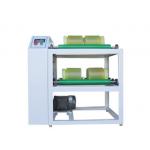
|
Alumina PTFE Ball Jar Rolling Mill Machine For Laboratory 1.1Kw Custom |
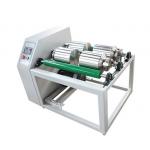
|
ODM Agate Alumina Jar Roller Ball Mill 800rpm Lab Scale Batch Processing |
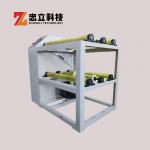
|
Compact Stainless Steel Laboratory Jar Roller Ball Mill For Powder Mixing |
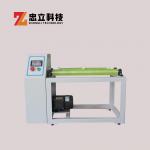
|
Planetary Zirconia Ball Jar Mill Roller Machine 1600 Rpm For Nanomaterial Synthesis |

|
650rpm Laboratory Jar Mill Roller Grinding Machine 80ml 125ml |
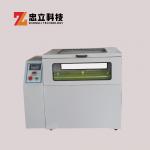
|
220V Continuous Roller Ball Mill Laboratory Grinding Mill Machine 1000ml |

